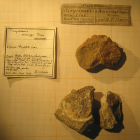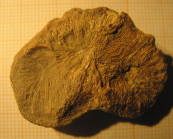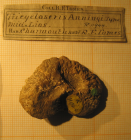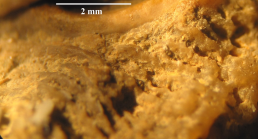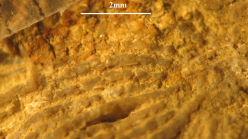Scleractinia taxon details
Tricycloseris Tomes, 1878 †
1439807 (urn:lsid:marinespecies.org:taxname:1439807)
accepted
Genus
Tricycloseris anningi Tomes, 1878 † (type by monotypy)
- Species Tricycloseris anningi Tomes, 1878 †
- Species Tricycloseris patelliformis Gregory, 1900 †
- Species Tricycloseris triangularis Gregory, 1900 †
- Species Tricycloseris limax Tomes, 1883 † accepted as Semeloseris limax (Tomes, 1883) † (unaccepted > superseded combination, basionym)
- Species Tricycloseris vellatus Gregory, 1925 † accepted as Apostrophyllum velatum (Gregory, 1925) † (unaccepted > superseded combination, basionym)
marine, fresh, terrestrial
fossil only
Tomes RF. (1878). On the stratigraphical position of corals of the Lias of Midland and Western counties of England and South Wales. <em>Quarterly Journal of the Geological Society of London.</em> 34: 179-195. [details]
Description Small massive thamnasterioid corallum with large corallites. Epitheca absent or eroded. Costae subequal. Intracalicinal...
Description Small massive thamnasterioid corallum with large corallites. Epitheca absent or eroded. Costae subequal. Intracalicinal increase. Radial elements are compact anastomosing, subequal in thickness along the radial directions and subequal from one to another, straight or curved. Distal edge moniliform with regular teeth corresponding to heads of trabecules, inner edge not observed, lateral faces covered of menianae, pennular outline festooned (seen from above). Microstructure not known. Hexameral symmetry cannot be deciphered, bilateral symmetry due to curvature of septa. Abundant endotheca made of dissepiments. The axial zone of the holotype cannot be satisfactorily observed. Synapticulae probably present but it is difficult to distinguish from connecting pennulae or thick dissepiments without thin section properly oriented. Wall absent between corallites. [details]
Hoeksema, B. W.; Cairns, S. (2025). World List of Scleractinia. Tricycloseris Tomes, 1878 †. Accessed at: https://www.marinespecies.org/scleractinia/aphia.php?p=taxdetails&id=1439807 on 2025-05-24
original description
Tomes RF. (1878). On the stratigraphical position of corals of the Lias of Midland and Western counties of England and South Wales. <em>Quarterly Journal of the Geological Society of London.</em> 34: 179-195. [details]
additional source Gregory JW. (1900). The Jurassic fauna of Cutch. The corals. <em>Palaeontologica Indica, Ser 9.</em> 2 (2): 1-195, pls. 2-27. [details]
additional source Gregory JW. (1900). The Jurassic fauna of Cutch. The corals. <em>Palaeontologica Indica, Ser 9.</em> 2 (2): 1-195, pls. 2-27. [details]
 Present
Present  Inaccurate
Inaccurate  Introduced: alien
Introduced: alien  Containing type locality
Containing type locality
From editor or global species database
Comparison It looks like a colonial Leptophyllia [details]Description Small massive thamnasterioid corallum with large corallites. Epitheca absent or eroded. Costae subequal. Intracalicinal increase. Radial elements are compact anastomosing, subequal in thickness along the radial directions and subequal from one to another, straight or curved. Distal edge moniliform with regular teeth corresponding to heads of trabecules, inner edge not observed, lateral faces covered of menianae, pennular outline festooned (seen from above). Microstructure not known. Hexameral symmetry cannot be deciphered, bilateral symmetry due to curvature of septa. Abundant endotheca made of dissepiments. The axial zone of the holotype cannot be satisfactorily observed. Synapticulae probably present but it is difficult to distinguish from connecting pennulae or thick dissepiments without thin section properly oriented. Wall absent between corallites. [details]
Remark Of the nominal species cited for Tricycloseris, probably only the type species, known by only one specimen is a Tricycloseris. Gregory's "Tricycloseris" from India have perforated septa. [details]
From editor or global species database



